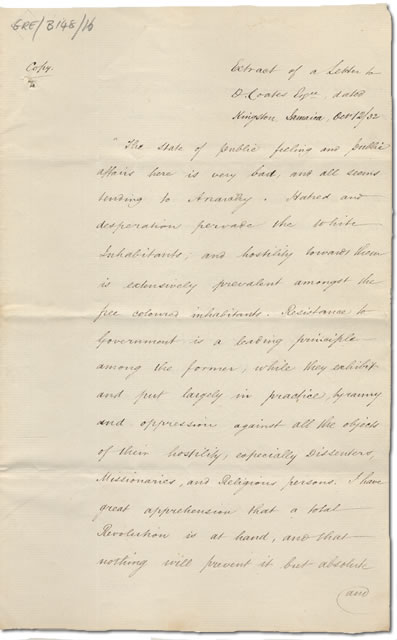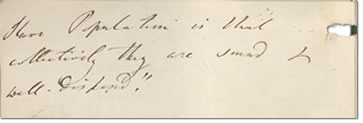
Bias
This source is a letter sent to Earl Grey in 1832 just before slavery was made illegal in 1833. Read it carefully and then try to answer the questions. A transcript and enlarged version are available. 1. Do you think that the author of this letter is pro- or anti-slavery? 2.What words does he use that make you think this? 3. Would you describe this source as biased? Why not try looking at another source to find out more about bias in primary sources?
This source can also be found amongst the Earl Grey papers and relates to the efforts being made to end slavery in the British Empire. Read it carefully and then try to answer the questions. A transcript and enlarged version are available. 1. Do you think that the author of this letter is pro- or anti-slavery? 2. What words or phrases does he use that make you think this? 3. Would you describe this source as biased? 4. Is it more or less difficult to describe this source as biased than the previous source? Why? 5. From reading both sources what do you think about bias in primary sources? |



